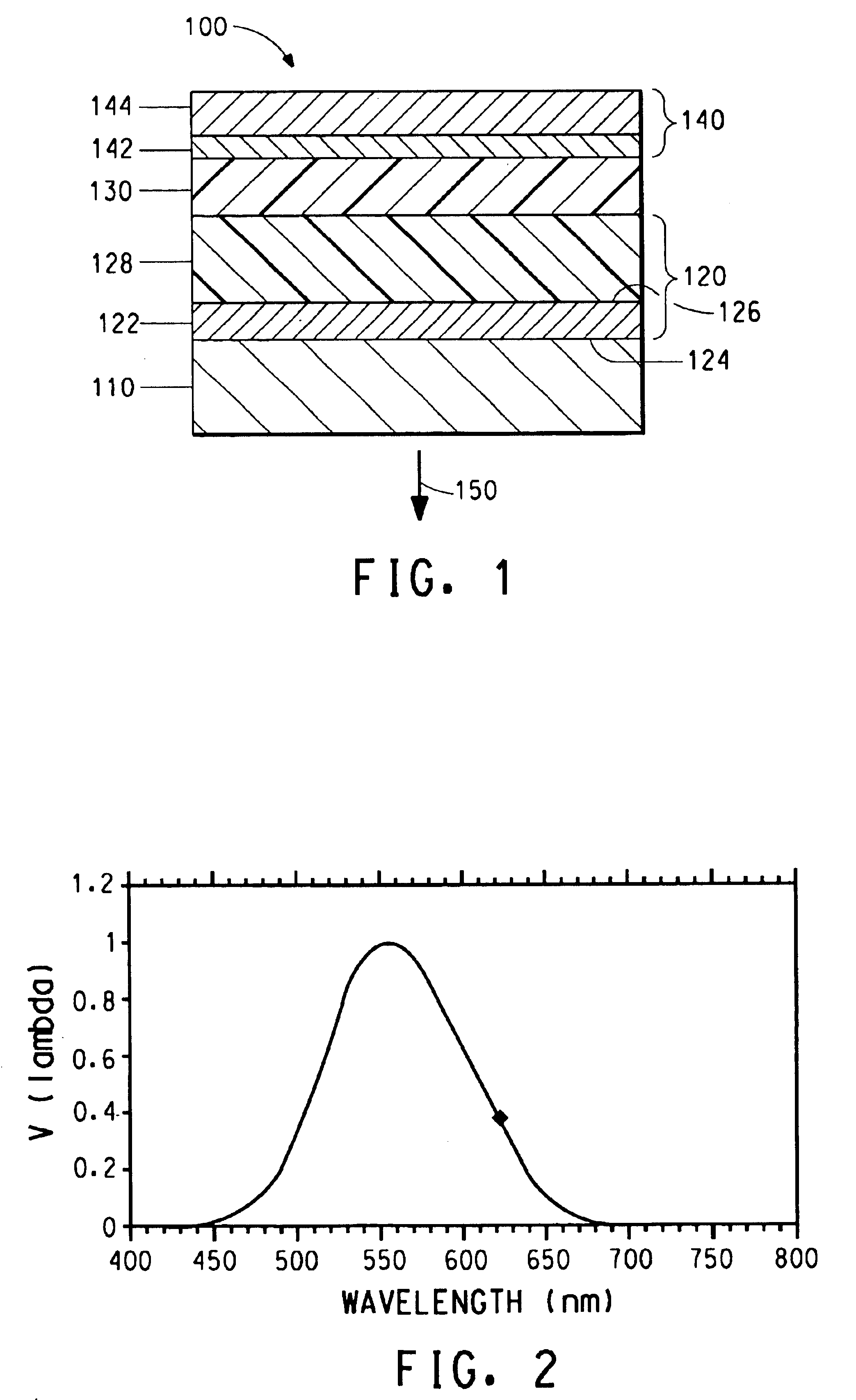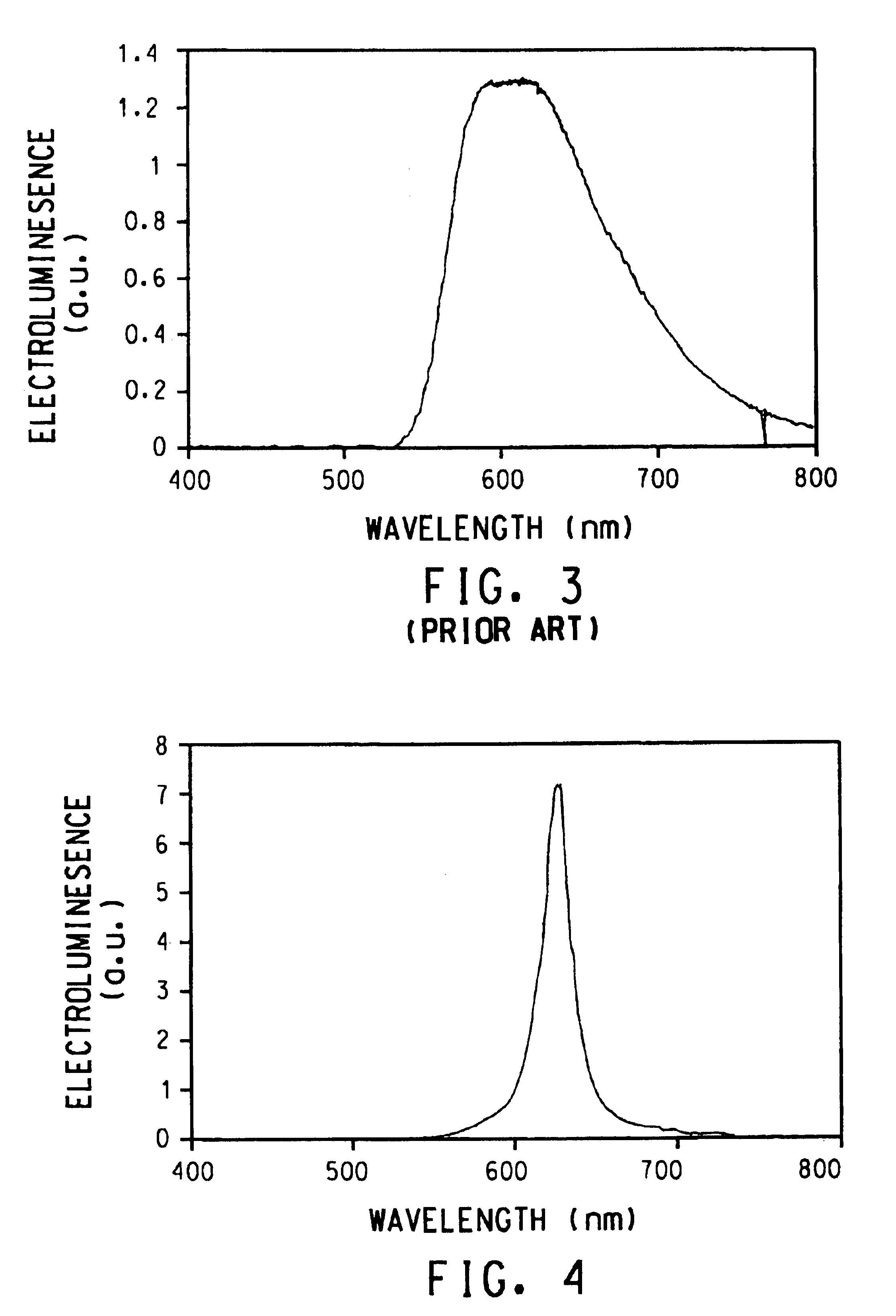Long lifetime polymer light-emitting devices with improved luminous efficiency and improved radiance
a polymer and light-emitting diode technology, applied in the direction of thermoelectric device junction materials, semiconductor devices, electrical apparatus, etc., can solve the problems of unresolved problems, work functions, unacceptably short device lifetimes, etc., and achieve high work functions, high reflectivity, and high work efficiency
- Summary
- Abstract
- Description
- Claims
- Application Information
AI Technical Summary
Benefits of technology
Problems solved by technology
Method used
Image
Examples
examples
The following examples illustrate certain features and advantages of the present invention. They are intended to be illustrative of the invention, but not limiting.
In the Examples and Comparative Examples below, the following procedure was followed to determine the following measurements:
Efficiency:
Efficiencies were measured using a UDT S370 optometer (available from UDT, a part of Gamma Scientific, of San Diego, Calif.) which includes a photodiode that is calibrated using the procedure described below: The photodiode is calibrated as follows: A NIST calibrated light source, with a known, uniform light emission was used. A mask was used so that only a light beam the size of the pixel active area was emitted. The photodiode was placed at a given distance from the light, and the number of volts were recorded. Thus, the number of volts corresponding to a particular light intensity (340 cd / m2) were known.
Radiance was measured using a Newport photodiode (available from Newport C...
example 1
A polymer LED device was fabricated as in Comparative Example A, except that the ITO was replaced with a vapor deposited layer of silver at a thickness of 300 Å.
example 2
A polymer LED device was fabricated as in Comparative Example A, except that a layer of silver at a thickness of 300 Å was vapor deposited on top of the ITO. The performance of this device is similar to that of Example 1 and Example 3, as described below.
PUM
 Login to View More
Login to View More Abstract
Description
Claims
Application Information
 Login to View More
Login to View More - R&D
- Intellectual Property
- Life Sciences
- Materials
- Tech Scout
- Unparalleled Data Quality
- Higher Quality Content
- 60% Fewer Hallucinations
Browse by: Latest US Patents, China's latest patents, Technical Efficacy Thesaurus, Application Domain, Technology Topic, Popular Technical Reports.
© 2025 PatSnap. All rights reserved.Legal|Privacy policy|Modern Slavery Act Transparency Statement|Sitemap|About US| Contact US: help@patsnap.com



